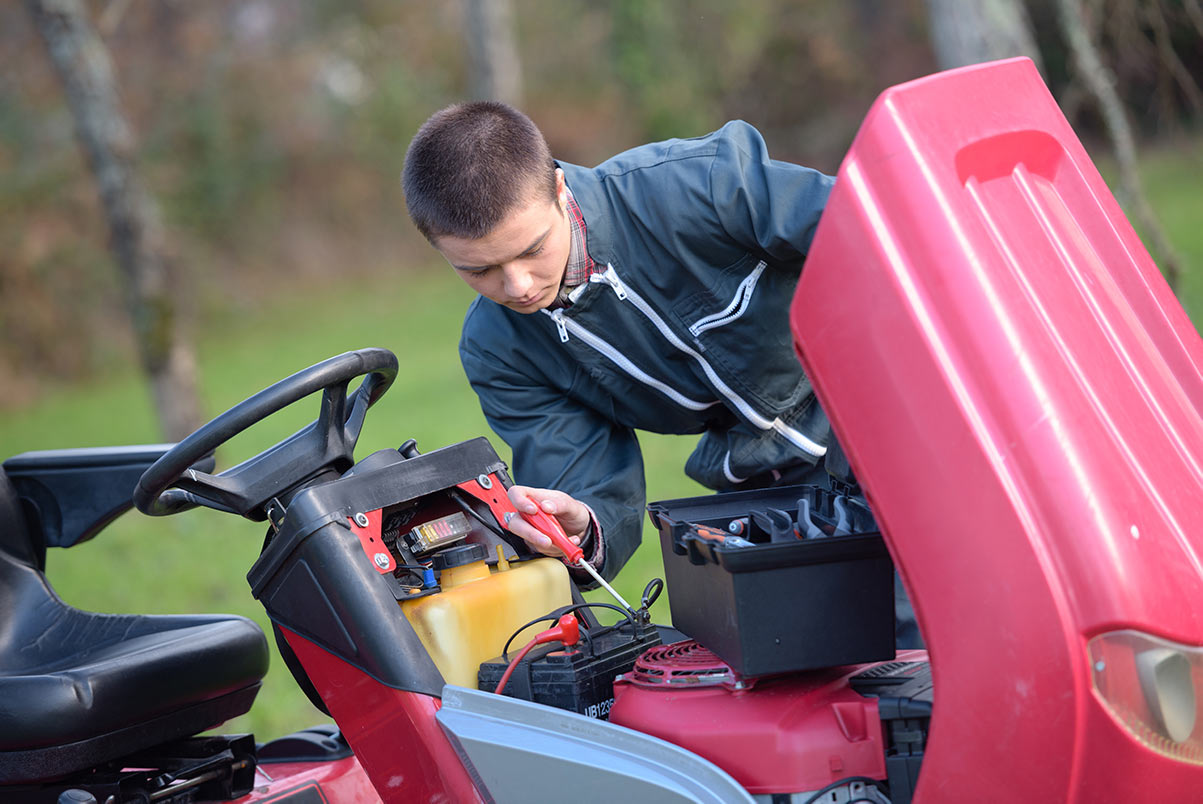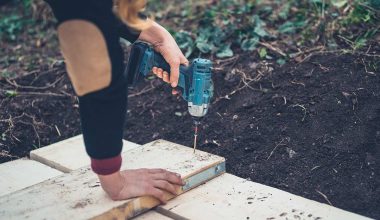A lawnmower is a substantial investment for any homeowner. Following these simple riding lawn mower maintenance tips once per season should help your machine start on cue for years to come.
Many of these tasks can be performed by a garden machinery shop, but you can easily save yourself the hassle and money by doing it at home.
You’ll need a basic toolkit, and if you can get your hands on it, a service kit for your riding lawn mower. This should include various perishable parts like spare filters, spark plugs, and belts. Sure, you can order these things separately, but you’ll save yourself lots of time and hassle by getting the kit all together.
Riding Lawn Mower Maintenance
Before you start, it’s helpful to quickly glance over the manufacturer’s guide for riding lawn mower maintenance. Keep an eye out for recommended service intervals, as well as when certain parts should be replaced.
Engine Maintenance
Let’s take a look at the main components of an engine service in turn.
Spark plugs
Dirty or faulty spark plugs are one of the most common issues behind engine starting problems. Your manufacturer will specify a replacement interval which you should follow. Even if you aren’t scheduled to replace them, it’s still a good idea to remove the plugs and give them a clean at the very least.
When removing the spark plug, you need to ensure no dirt falls into the cylinder. Do this by cleaning around the plug before you loosen it, and then again just before you unthread it. Remember, you don’t need to tighten your plugs excessively when replacing them – doing so can cause serious damage to the motor.
Oil change
Changing the oil is a much more straightforward repair than many people imagine but it is essential to riding lawn mower maintenance. First, check the motor or the manual for details of which “weight” of oil you need. Don’t worry which brand is recommended, but note down the type – something like 10W-30.
To change the oil, locate the filler hole and the drain hole (which is on the bottom of the motor). Place a large bucket or oil paint can under the drain hole, then open it with a wrench. Open the filler at the top, and wait until the oil drains out. Replace the drain screw, then refill from the filler with the correct amount of oil specified by the manufacturer.
Always recycle your old oil at a registered recycling location.
Oil filter
When you change the oil, you must also change the oil filter – otherwise there’s little point in changing the oil at all! These are very straightforward to change – you simply unscrew them and replace with a new one. It can be helpful to put a light coat of thin oil around the gasket to prevent binding.
Fuel filter
Next up, replace the fuel filter. This is another part that frequently causes engine starting issues – so it’s certainly worth doing. Remember to clamp the fuel hose either side of the filter before you remove it, otherwise fuel will go everywhere. When you remove the filter, put your fingers over the end to prevent the fuel draining out.
Air filter
Although you should change your air filter on the manufacturers recommended intervals, most machines have a foam pre-filter as well. If it’s time to change the main filter, go ahead with that, and in both instances remove the foam filter and wash it carefully with soap and water. Don’t use any solvents as they can damage the foam.
Cutter Deck
Cutter decks are often neglected on any riding lawn mower, and tend to corrode quickly with the moisture from the grass cuttings. Regular inspection and maintenance can improve cutting performance and keep the cutter running smoothly.
Clean & Inspect Belts
Firstly, give the whole deck a good brush off or use a vacuum to remove excess grass trimmings. This is often best done outside, otherwise you’ll fill your workshop with dirt! Once clean, remove any covers around the belts and you’ll almost certainly find more cuttings and dirt. Cleaning these areas is key – the debris collected in there can damage belts and pulleys.
Once you’ve cleaned the deck, inspect all the belts and pulleys to ensure everything is in good working order. Belts sometimes need replacing, or simply re-tensioning to ensure they are working correctly. Refer to your manual to check if there’s any specific points related to your mower model.
Sharpen Blades
Sharpening your mower blades will not only cut grass more effectively, but it’ll also make your lawn look greener. Dull mower blades use more fuel and tear the grass rather than cutting it cleanly, leaving a brown tinge to the lawn.
To remove the blades for sharpening, drop the deck off the mower onto a pair of wood two by fours. You can then easily slide the deck out underneath. Flip the deck over and remove the blades for sharpening. Sometimes it’s helpful to have two sets of blades – so you can simply replace them and take the old set away for sharpening at a later date.
Grease Mechanical Joints
You will have noticed a variety of grease ports around your mower. Typically these are located anywhere there is a mechanical interface – such as steering bearings, cutter deck lifters etc. Check your manual for which type of grease you should use, and the connect a grease gun up to the grease ports. Pump them full of fresh grease until you see it squeezing out.
Inflate Tires
Finally, inflate the tires to the recommended level. You can normally find this on the outside of the tire. Now you’re ready to mow!






